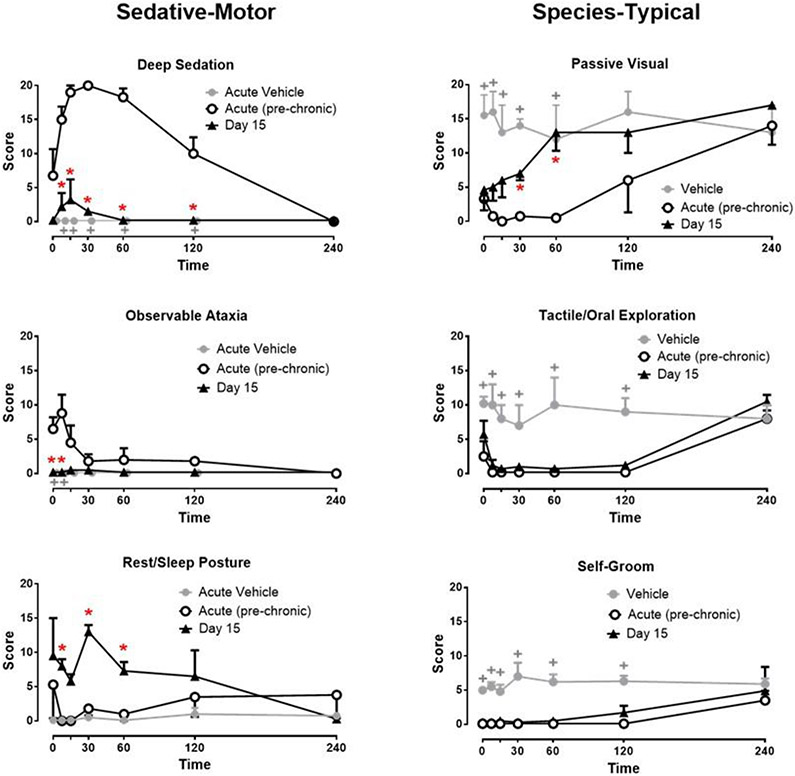Figure 2.
Time-dependent effects of alprazolam on sedation-motor effects (deep sedation, observable ataxia, rest/sleep posture) and species-typical behaviors (passive visual, tactile/oral exploration, self-groom) in rhesus monkeys (N=4) during acute (pre-chronic treatment) tests and day 15 of chronic alprazolam treatment. Alprazolam was administered i.v. for all tests, and behavior was determined via focal sampling (5 min intervals) conducted 0, 7.5, 15, 30, 60, 120, and 240 min after the injection (see text for behavior definitions). Chronic alprazolam (1.0 mg/kg, i.v.) was administered via syringe pump 7 days per week, every 4 hours (6 mg/kg/day). Data are modified frequency scores, in which the occurrence of a behavior was scored during a 5-min sampling period divided into 15-sec intervals, with each behavior “score” calculated as the mean number of intervals in which the behavior occurred (± SEM). For species-typical behavior, gray lines and symbols are vehicle data (these results were zero for sedative-motor measures). *Note that red asterisks are acute (pre-chronic) test results vs. Day 15 results, Bonferroni t-tests, p< 0.05. +Note that grey plus symbols are tests for differences between acute vehicle and acute (pre-chronic) treatments, Bonferroni t-tests, p< 0.05.

